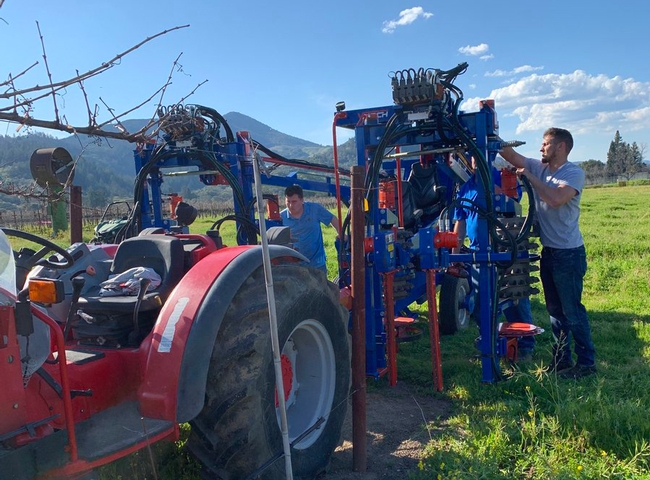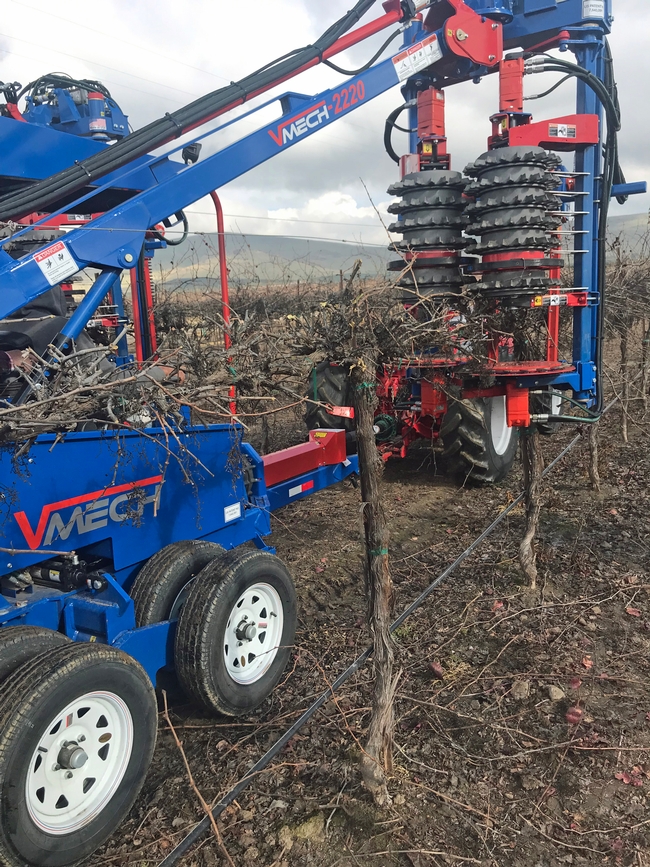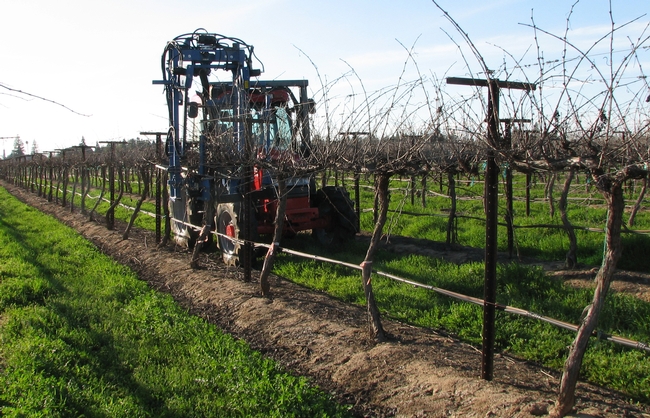Winegrape vineyards can be converted for machine pruning without replanting
Wine grape growers in the San Joaquin Valley who want to switch from hand pruning to mechanical pruning won't have to replant their vineyards to accommodate machinery, according to a new study published in HortTechnology by University of California Cooperative Extension researchers. Instead, growers can retrain the vines to make the transition, without losing fruit yield or quality.
Mechanical pruning reduced labor costs by 90%, resulted in increased grape yields and had no impact on the grape berry's anthocyanin content. That's welcome news for growers because the cost of re-establishing a vineyard in the region is roughly $15,600 per acre.
“We found that growers do not have to plant a new vineyard to mechanize their operations,” said Kaan Kurtural, UC Cooperative Extension specialist in the UC Davis Department of Viticulture and Enology. “We have proven beyond a doubt that an older vineyard can be converted to mechanization. There is no loss in yield during conversion and post-conversion yield is better and fruit quality is equivalent to or better than hand-managed vines. The economies of scale are evident in the savings per acre and per vine as depicted in the balance sheet provided with the newly published paper.”
The research was conducted in an 8-acre portion of a 53-acre, 20-year-old Merlot vineyard in Madera County. After completion of the research project, the grower converted the rest of the 53-acre vineyard to single high-wire sprawling system. Many other wine grape growers have followed suit.
The Wine Group, which manages 13,000 acres of vineyards across Central California, is establishing new vineyards and converting old vineyards for mechanical pruning and suckering, said vineyard manager Nick Davis. Davis, who works closely with Kurtural and the UCCE viticulture advisor in Fresno County, George Zhuang, said the company greatly values the UC Cooperative Extension research that is guiding the changes.
“I think extensionists are undervalued,” Davis said. “We lean on them for applied research, which has been wonderful. They offer us what we can't provide ourselves.”
More than half of all California wine grapes are grown in the San Joaquin Valley. Worker shortages, rising labor costs, low returns and occasional droughts are driving wine grape growers to seek innovative ways to sustain their businesses.
“To help growers maintain the profitability of their vineyards, we're studying the use of machines to reduce the number of people needed to perform tasks like pruning,” Zhuang said.
“Because the canopy architecture and yield characteristics of mechanically pruned vines are different from vines that are hand-pruned, the water and fertilizer requirements for the mechanically pruned vines can be quite different. So we are studying the yield and fruit quality of grapes produced on different rootstocks in mechanical pruning systems in the San Joaquin Valley,” Zhuang said.
The Madera field study was conducted for three consecutive seasons in the hot climate conditions typical of the San Joaquin Valley. In this area, traditional vineyards are head-trained to a 38-inch-tall trunk above the vineyard floor and two eight-node canes are laid on a catch wire in opposite directions and two eight-node canes are attached to a 66-inch high catch wire. Although this traditional training system can work for mechanical harvesting, it doesn't accommodate mechanical dormant pruning and shoot removal with limited success in other mechanical canopy management operations.
To accommodate mechanical pruning and shoot removal, the vines were converted to a bilateral cordon-trained, spur-pruned California sprawl training system, or to a bilateral cordon-trained, mechanically box-pruned single high-wire sprawling system.
The latter option proved to be the most successful system for mechanical pruning in the San Joaquin Valley.



